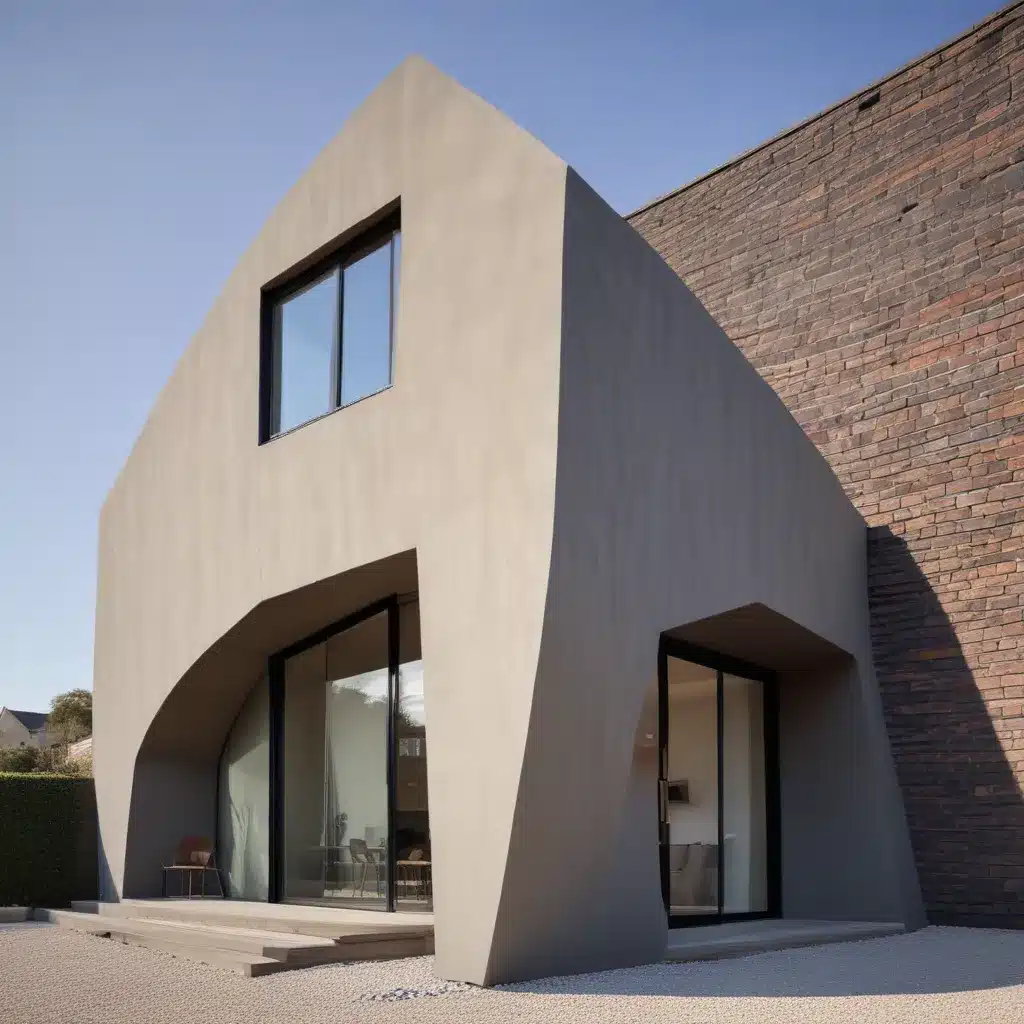Embracing the Unexpected in Sofa Design
I’ve always been a bit of a furniture fashionista. Growing up, my room was a constantly evolving canvas – one week it was sleek and minimalist, the next it was a riot of color and whimsy. But throughout all those changes, one thing remained constant: my love for sofas that pushed the boundaries of traditional design.
You see, I firmly believe that the humble sofa is so much more than just a place to plop down and binge-watch Netflix. It’s a statement piece, a reflection of our personal style and creativity. And in an age where so much of our lives is lived online, the sofas in our homes have become even more important as a way to express our unique selves.
That’s why I’m constantly on the hunt for sofas that challenge the norm – the ones with unexpected shapes, bold colors, and a touch of avant-garde flair. Because let’s be real, who wants a boring, cookie-cutter couch when you could have something that sparks a conversation?
Defying Gravity with Unconventional Shapes
One of the things I find most exciting about modern sofa design is the way designers are experimenting with shape. Gone are the days of the generic rectangular or L-shaped sofa. Instead, we’re seeing pieces that seemingly defy the laws of gravity, with swooping curves, asymmetrical lines, and even cantilevered silhouettes.
Take, for example, the Bay Window sofa by Indian designer Rooshad Shroff. With its undulating, wave-like form, it’s almost like the sofa is frozen in motion, captured mid-flow. And yet, despite its seemingly precarious shape, the piece is both visually striking and remarkably comfortable to sink into.
Or consider the research highlighted in the Cognitive Research Principles and Implications article, which explores how our brains are hardwired to respond to curvilinear forms. The researchers found that we tend to rate curvilinear shapes as more approachable and less threatening than angular ones. No wonder, then, that sofas with soft, organic lines like the Bay Window evoke such a sense of visual comfort and ease.
Of course, it’s not just the curves that can challenge our perceptions. Some designers are playing with unexpected angles and asymmetries, creating sofas that seem to defy gravity. The Sofa Spectacular collection, for instance, features pieces with cantilevered arms and seats that appear to float above the floor. It’s a bold, almost sculptural approach that forces us to rethink what a sofa can be.
Exploring the Emotional Impact of Color and Texture
But it’s not just shape that can challenge our notions of modern style. Color and texture also play a crucial role in shaping our perceptions and emotional responses to furniture.
Take, for example, the research highlighted in the Hamline Oracle article, which explores how the color of our hair can impact the way we’re treated by others. The article suggests that unconventional hair colors like purple are often met with a mix of curiosity and occasional judgment, while more “natural” shades like dirty blonde tend to fly under the radar.
I can’t help but wonder if a similar dynamic might be at play when it comes to sofa colors. After all, a bold, vibrant hue like crimson or turquoise is bound to elicit a very different reaction than a muted, neutral tone. And the tactile quality of the fabric – be it plush velvet, sleek leather, or nubby boucle – can also shape our emotional response, evoking feelings of comfort, luxury, or even playfulness.
Crafting Multisensory Experiences
But it’s not just the visual and tactile aspects of sofa design that can captivate us. The Cognitive Research Principles and Implications article also highlights the importance of considering the other senses – sound, smell, and even taste – when it comes to creating truly immersive, multisensory experiences.
Imagine, for instance, a sofa that not only looks and feels incredible but also has built-in speakers that can transport you into a lush, cinematic soundscape. Or a piece that’s infused with subtle, calming aromas to help you unwind after a long day. It’s a level of sensory engagement that goes beyond the traditional confines of furniture design, pushing the boundaries of what a sofa can be.
And while we may not be able to taste our sofas (at least, I wouldn’t recommend it!), the article’s exploration of how color and lighting can influence our perception of flavor offers some intriguing possibilities. Perhaps a sofa in a warm, earthy tone could evoke a sense of comfort and nourishment, while a sleek, monochromatic piece might feel more clinical and clinical.
Embracing the Unconventional
At the end of the day, what I love most about the current state of sofa design is the sense of fearlessness and creativity that permeates the industry. Designers are no longer content to play it safe, to simply churn out the same old rectangular cushions in neutral tones. Instead, they’re pushing the boundaries, experimenting with unconventional shapes, colors, and textures that challenge our preconceptions and force us to rethink what a sofa can be.
And you know what? I’m here for it. Because in a world that often feels so homogenized and predictable, the opportunity to surround ourselves with pieces that are truly unique and visually captivating is a breath of fresh air. It’s a chance to express our individualism, to create spaces that are a true reflection of our personal style and sensibilities.
So if you ask me, the future of sofa design is looking pretty darn exciting. Bring on the curves, the angles, the bold hues, and the unexpected textures. Because when it comes to furniture, I’m all about embracing the unconventional and letting my living room be a canvas for self-expression. Who knows what design delights might be just around the corner?




